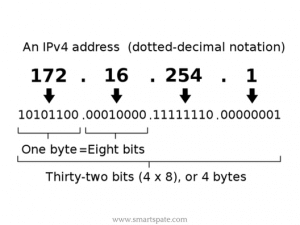Total Exhaustion Or Is There Any Life After IPv4 Addressing!
At the CloudFlare Internet Summit in 2016, Jeff Dean, an engineer at Google, gave this prediction: “As far as I can tell, by 2020 we will have flying machines, a singularity, and IPv6.”
A year earlier on Twitter, he announced that “the IPv4 party is over”, joining a very popular topic to discuss the last 30 years concerning the exhaustion of IPv4 addresses. In this article, we will try to generalize already known facts and assess what will happen next.
IPv4 This Days
The news, which Jeff responded to in 2015, concerned the application of the world Internet registrar – American ARIN – about the complete exhaustion of IPv4 addresses. Prior to this, alarming messages came from the regional registrars APNIC and RIPE, and LACNIC in early 2017 announced the transition to the third phase of its plan for issuing IPv4, reaching the remaining 4.7 million public addresses.
- The only place where there are still public IPv4 addresses is Africa. Although AFRINIC reserves will also be exhausted in the near future. The dynamics of spending addresses can be monitored on a special website to form an idea of the situation.
Over the next few years, Internet service providers will face a choice between NAT mechanisms and IPv6, an Internet protocol with an almost unlimited number of addresses. Many operators choose the second option. Verizon Wireless this summer stopped issuing public static IPv4 addresses to its business customers and completely switched to IPv6. So far, only 10% of websites around the world use IPv6.
- In the meantime, IPv4 addresses become a valuable resale target. This, by the way, was predicted by John Curran, president, and CEO of ARIN, 7 years ago. The so-called waiting list operates in the ARIN region, and some organizations work “bypass”, referring to the secondary and “black” markets. In 2015, ARIN approved 40 million IPv4 addresses. In 2016 this number decreased by almost 50% and amounted to 20.75 million.
According to Janine Goodman, vice president of Avenue4, one of the 24 officially registered ARIN brokers for IPv4 transactions, the price for the address on the secondary market ranges between $ 10 and $ 15. It is not surprising that criminals even go to deceive users who are ready to overpay for addresses to expand their networks.
Why did IPv4 end?
The sources of the problem have long been known – 4.3 billion 32-bit IPv4 addresses for 4.5 billion people living on Earth at the time of TCP / IP adoption seemed a reasonable idea. However, it was quickly questioned by the speed of the spread of Internet access and the growth of the world’s population.

The first ARPAnet network consisted of hundreds of hosts, but not billions, so 8-bit addresses fully met the requirements of the network at the first stages of its life. In 1983, when switching to the TCP / IP model, the choice was stopped by 32 bits, which for a long time was more than enough. Many companies received more IPv4 addresses than they need.
- In less than 10 years, the first doubts about scalability due to the exhaustion of IP addresses appeared. This entailed the creation of regional Internet registrars in 1992, which were empowered to manage address blocks in local markets.
With the advent of the Internet, the growth of users and the demand for new addresses could not be stopped. In the first half of the 1990s, attempts were made to contain the inevitable: methods of classless addressing, NAT technology, and others.
- Some initiatives, such as cross-domain routing and network address translation, have helped to reduce the size of routing tables and to optimize the use of IP addresses. But only temporarily. According to Owen DeLong, a member of the ARIN advisory council, without these steps, the addresses would end in a few years. Anyway, since then every registrar “existed in the conditions of the economy”.
Meanwhile, in 1994, a recommendation was made to develop a successor to IPv4, and a little later – the main provisions of IPv6. Since that moment hardware and software products supporting IPv6 began to appear, however, the new protocol basically acted as a backup plan. Today, the proportion of the protocol is slowly increasing.

The current situation is the result of understated expectations for the growth of hosts in the global network, aggravated with the proliferation of mobile devices and inefficient allocation of addresses in the first decade.
Difficulties of transition
Protocol IPv6 is ready to work since 1999, but enterprises are not in a hurry to move on to it. This is due to the fact that IPv6 is not backward compatible with IPv4. However, in 2011, Martin Levy, Hurricane Electric’s director of operations for IPv6, urged companies to move to a new protocol to avoid costly capital costs and possible future disruptions.
- However, the transition to IPv6 is also an expensive solution, although the addresses themselves are available for free. The implementation will require the purchase of new network switches and routers and training of IT staff. On the other hand, there is an opinion according to which the maintenance of infrastructure on IPv4 will only increase in price over time. Providers and organizations will need to quickly decide on their further strategy since the most costly for the industry costs a transitional stage.
IPv6 has a number of advantages, except potential inexhaustibility. For example, the next-generation protocol has a built-in IPSec component that encrypts and authenticates each individual data packet. It can complicate work for cybercriminals, although, of course, vulnerabilities remain in IPv6.
Most operating systems are already ready for IPv6 adoption. Ready and clever devices, which greatly exacerbated the situation of IPv4. However, many older routers are not compatible with IPv6, so most ISPs will have to support two implementations of the same protocol. It is important that with a full migration to IPv6, you will only have access to IPv6-capable sites.
What’s next
Although the number of IPv6 addresses is so great that the prospect of their exhaustion does not bother even the most pessimistic futurists, the question of the future under conditions of depletion and this protocol periodically rises. The network even has a description of IPv9 – the protocol of the future with addresses for anything.
- Researcher Bill Arnaud (Bill St. Arnaud) complains that IPv6 does not provide new functionality. He notes that the telephone system and the post office of the United States once faced a similar problem, but found a solution not to create a new addressing system from scratch, but to expand with existing suffixes and prefixes. Thus, Bill hints at finding an alternative, less radical option, than switching to a new protocol.
Gabriel Ramuglia, the founder of the hosting provider, also recalls that IP addresses are not fossil fuels, and large companies that received blocks from registrars did not actually spend them. Many addresses in reality simply remain unclaimed, and the whole problem lies in their inefficient distribution.
- Much of the address space is still used today, and the inactive segment is gradually returning to circulation – only this year the Massachusetts Institute of Technology discovered 14 million “extra” IP addresses. Most of them were put up for sale.
In addition, there are new solutions to address savings, such as reverse proxy servers. Therefore, IPv4 will hardly abruptly cease to exist. The Internet still continues to live in the established paradigm.





